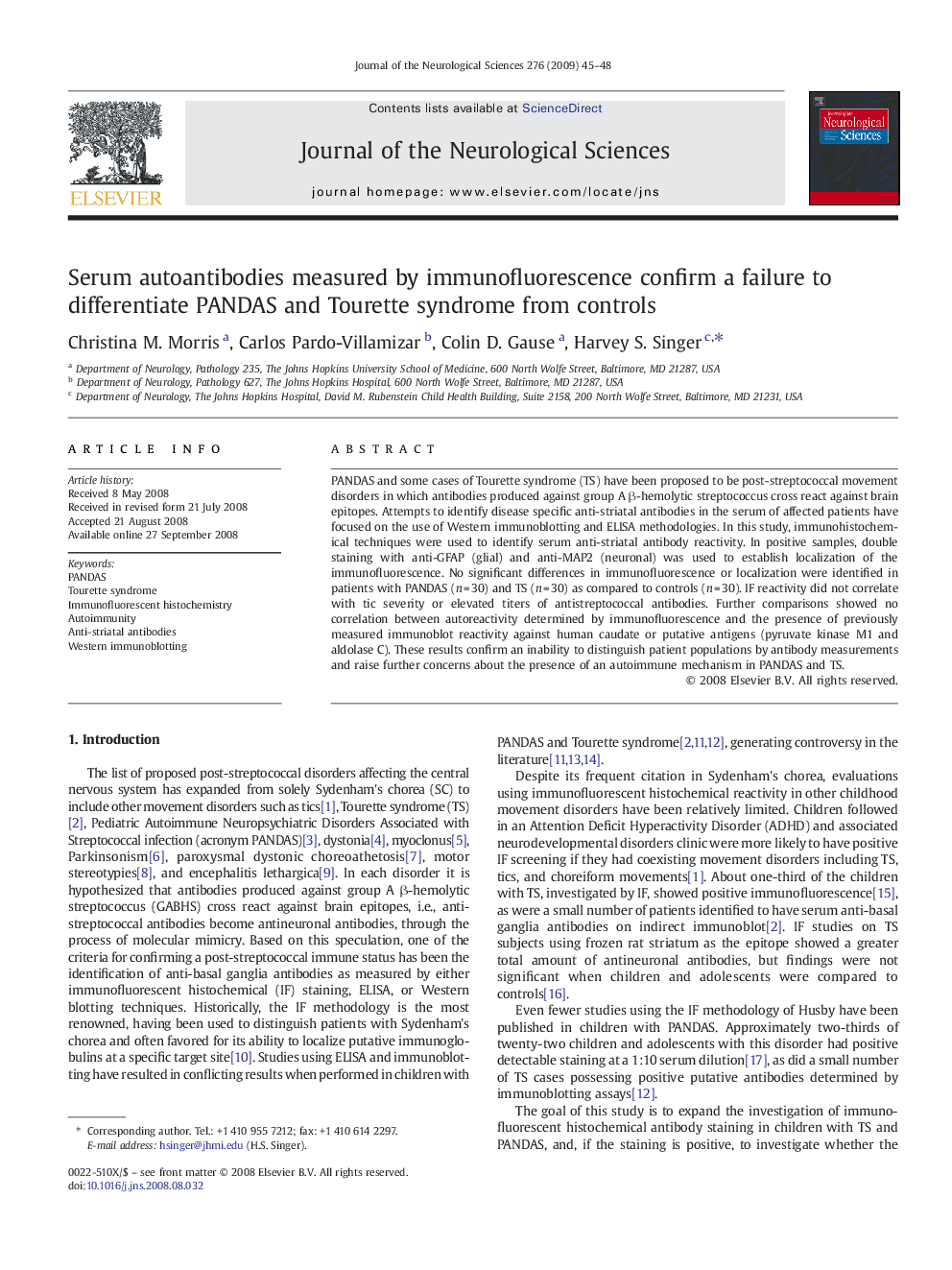| Article ID | Journal | Published Year | Pages | File Type |
|---|---|---|---|---|
| 1915412 | Journal of the Neurological Sciences | 2009 | 4 Pages |
PANDAS and some cases of Tourette syndrome (TS) have been proposed to be post-streptococcal movement disorders in which antibodies produced against group A β-hemolytic streptococcus cross react against brain epitopes. Attempts to identify disease specific anti-striatal antibodies in the serum of affected patients have focused on the use of Western immunoblotting and ELISA methodologies. In this study, immunohistochemical techniques were used to identify serum anti-striatal antibody reactivity. In positive samples, double staining with anti-GFAP (glial) and anti-MAP2 (neuronal) was used to establish localization of the immunofluorescence. No significant differences in immunofluorescence or localization were identified in patients with PANDAS (n = 30) and TS (n = 30) as compared to controls (n = 30). IF reactivity did not correlate with tic severity or elevated titers of antistreptococcal antibodies. Further comparisons showed no correlation between autoreactivity determined by immunofluorescence and the presence of previously measured immunoblot reactivity against human caudate or putative antigens (pyruvate kinase M1 and aldolase C). These results confirm an inability to distinguish patient populations by antibody measurements and raise further concerns about the presence of an autoimmune mechanism in PANDAS and TS.
